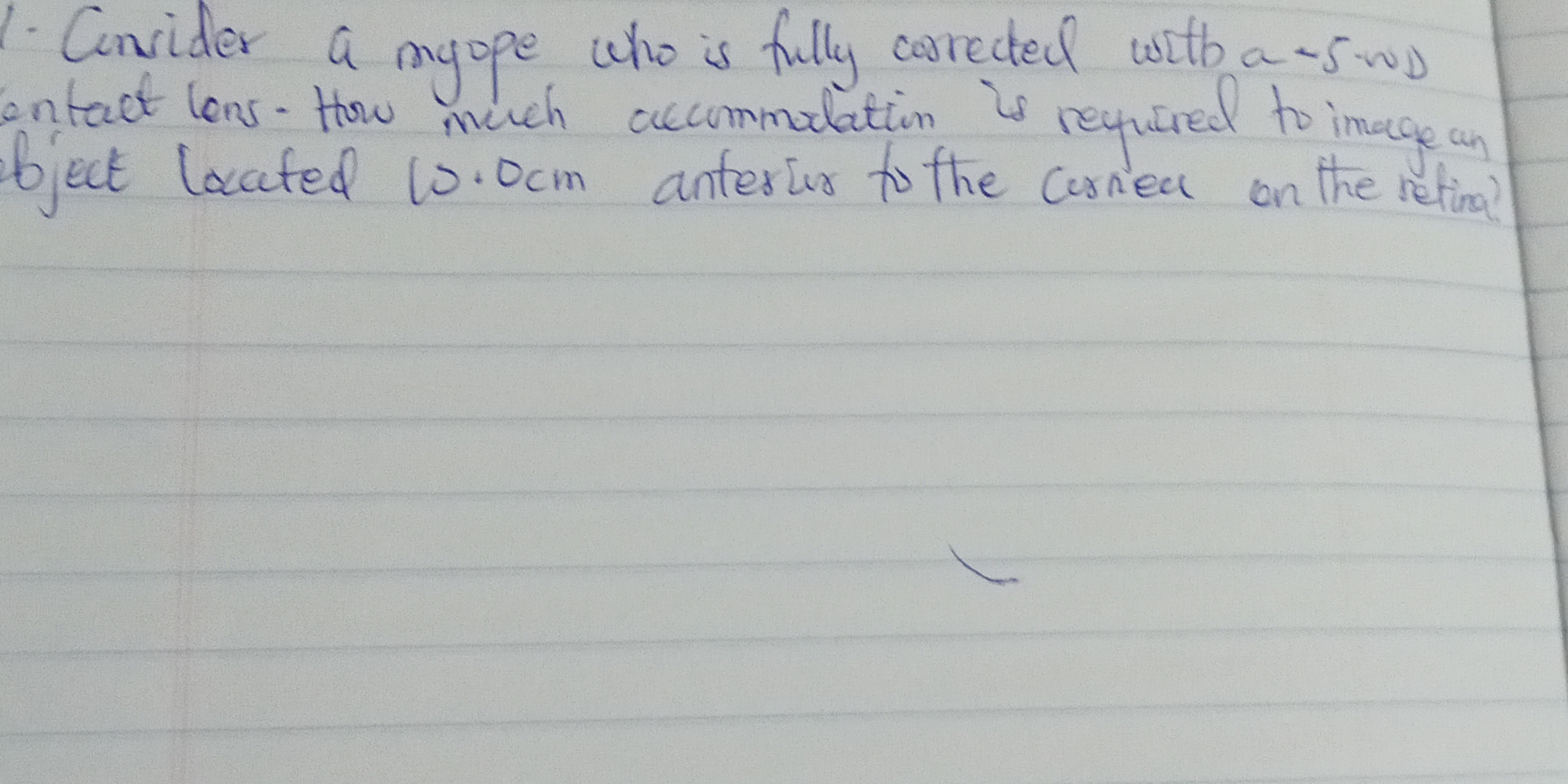Consider a myope who is fully corrected with a -5.00D contact lens. How much accommodation is required to image an object located 10.0 cm anterior to the cornea on the retina?

Understand the Problem
The question describes a myopic (nearsighted) individual who is fully corrected with a -5.00D contact lens. It asks how much accommodation (the ability of the eye to adjust its focus) is required to focus an object located 10.0 cm in front of the cornea onto the retina. To solve this, we need to consider the power of the contact lens, the object distance, and how accommodation affects the overall refractive power of the eye.
Answer
10.0 D
Answer for screen readers
10.0 D
Steps to Solve
- Convert object distance to meters
Convert the object distance from centimeters to meters. This is necessary because diopters are measured in inverse meters.
$d = 10.0 , \text{cm} = 0.10 , \text{m}$
- Calculate the vergence of light from the object
Vergence is the inverse of the object distance.
$V = \frac{1}{d} = \frac{1}{0.10 , \text{m}} = 10.0 , \text{D}$
- Determine the required accommodation
Since the myope is fully corrected with a -5.00D lens for distance vision, without accommodation, the eye can focus objects at infinity. When an object is placed at 10.0 cm, the eye needs to accommodate to bring the object into focus. The required accommodation is equal to the vergence of light from the object.
Accommodation $= 10.0 , \text{D}$
10.0 D
More Information
The required accommodation is equal to the vergence of the light coming from the object, which in this case is 10.0 D. This means the eye must increase its refractive power by 10.0 diopters to focus on an object located 10.0 cm in front of the cornea.
Tips
A common mistake is forgetting to convert the object distance to meters before calculating the vergence. Another mistake could be not recognizing that the accommodation required is simply the vergence of light from the near object.
AI-generated content may contain errors. Please verify critical information